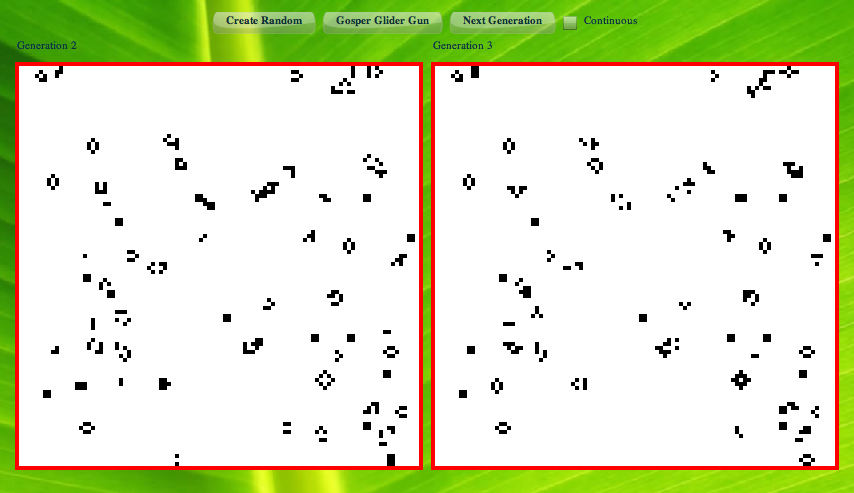PPE 2: Java Project Skeleton
GameOfLifeServer
I've been following the progression of the tool AppFuse for some time now but haven't had a chance to use it. This seems like a prime time (cue learning curve for first new technology). While there are many Java frameworks I could use, I've found the Spring Framework to be rock solid and know that it covers everything I could want to do with this simple application. Spring has also created Spring Web MVC to support the front-end pieces. I think it offers a cleaner solution than Struts. AppFuse supports Spring Web MVC based projects so that should make this straight forward.
Alas AppFuse requires Maven (cue learning curve for second new technology) which I don't currently have installed. Back to the command line for that. I already have Java installed so that AppFuse requirement is there and I'll start off with the HSQLDB profile since my MySQL server runs on a different machine and I don't want to mess with configuration just yet.
# 3rd party Java projects I store in a standard directory cd /Applications/Java # downloaded from one of the available mirrors tar -zvxf ~/Storage/apache-maven-2.0.9-bin.tar.gz setenv MAVEN_HOME /Applications/Java/apache-maven-2.0.9 setenv PATH "${PATH}:${MAVEN_HOME}/bin"
The latter two lines I'll be adding to my shell so that they get picked up next time I launch a terminal window. If you hadn't noticed those commands are in tcsh. I like it better than bash as my terminal shell (since I never made the switch to zsh which I hear is even better) but any scripting I do is in bash.
Now to let AppFuse do its magic.
cd ~/source/trunk/danielr/projects/PPE/ # tried to run the AppFuse Maven command line but got an error, see below svn delete GameOfLifeServer svn commit -m "Remove server directory since AppFuse complains if it already exists" # now I can run it mvn archetype:create -DarchetypeGroupId=org.appfuse.archetypes -DarchetypeArtifactId=appfuse-basic-spring -DremoteRepositories=http://static.appfuse.org/releases -DarchetypeVersion=2.0.2 -DgroupId=com.neophi.gol -DartifactId=GameOfLifeServer # checking this into subversion as recommended svn add GameOfLifeServer/ svn commit -m "Initial AppFuse generated project" # now to play with the project cd GameOfLifeServer/ # since I don't want to deal with MySQL properties right now mvn -Phsqldb mvn -Phsqldb jetty:run-war
Man those Maven targets are downloading a lot of stuff. That makes sense since I've never used Maven before so have nothing in my local repository. Overall as I've been playing with AppFuse the documentation on their site has been good enough that I can muddle through it. Now to pull it into the IDE.
# create Eclipse project files mvn eclipse:eclipse
After launching Eclipse I added a Java Classpath Variable called M2_REPO pointing at "/Users/danielr/.m2/repository". I tried to use Maven to add it but it didn't work. Turns out it might have worked but had issues trying to use "~" when specifying the location of my Eclipse workspace directory. Next I imported the project located at "~/source/trunk/danielr/projects/PPE/GameOfLifeServer/". It imported and compiled with the expected errors. I think that means it's time to commit to subversion again.
# don't check in the directory Maven creates its files in
svn propset svn:ignore target .
# add the Eclipse created files
svn add .classpath .project .settings/
svn commit -m "Added ignores and Eclipse project files"
And with that, I'm calling it quits for today.
Closing Thoughts
For a snapshot of the project in process grab PPE-2.tar.gz.
For the history of this project see Programming Project Experiment (PPE).
